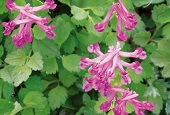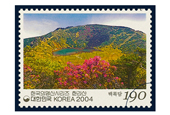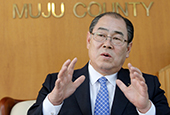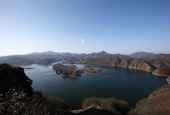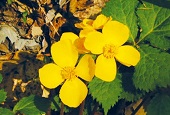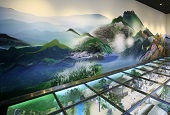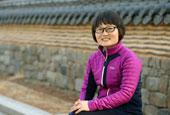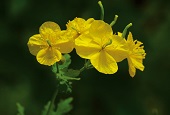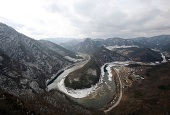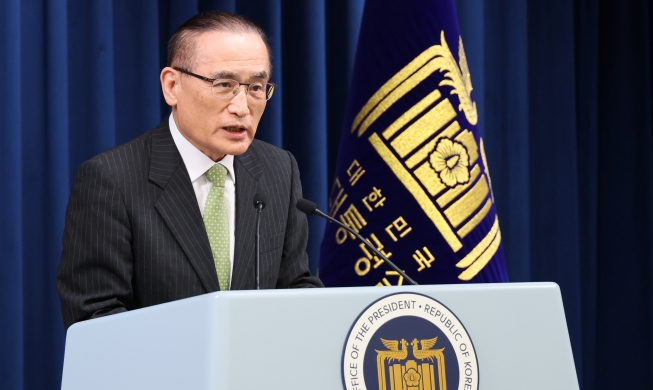Gwanaksan Mountain (관악산, 冠岳山) stands 632 meters at its peak and the mountain got its name because it looks like a person wearing a traditional bamboo hat. The rocky mountain is good for a leisurely hike or even for more serious rock climbing.
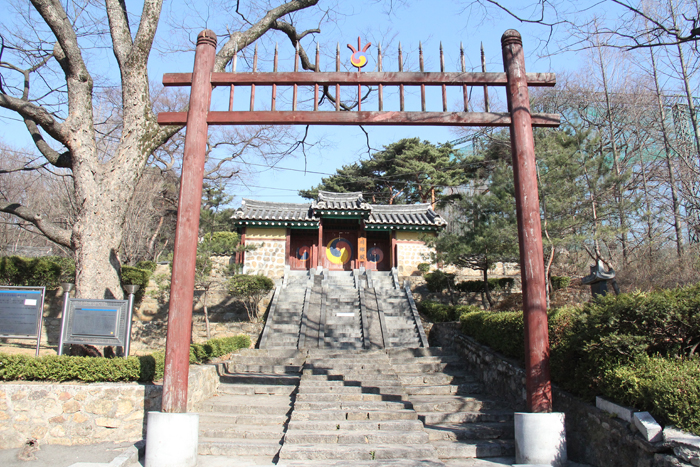
Along one of the trails up Gwanaksan Mountain sits the Gwacheon Hyanggyo, a regional public school from Joseon times (1392-1910). The school was first built on its current location in 1690 and it was restored in 1996.
There are several trails up to the mountain's peak. One starts near Seoul National University's main gate in Sillim-dong, Gwanak-gu District, Seoul. Another begins at Gwacheon City Hall. The latter trail is easily accessible from Gwacheon. The slope is gentle and hikers can enjoy a leisurely walk up the trail without much difficulty.
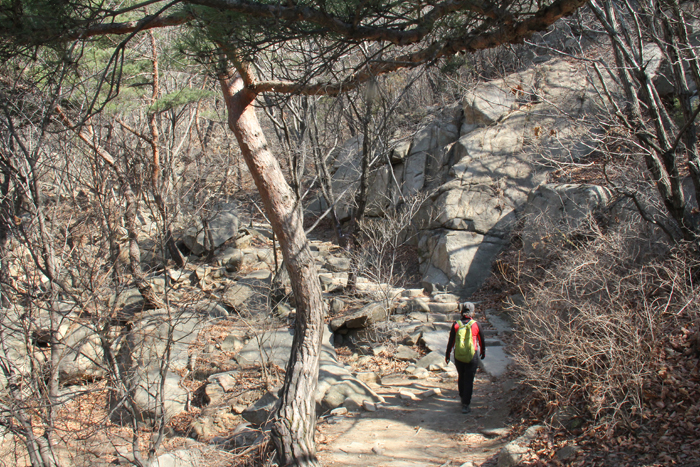
The trail to the peak of Gwanaksan Mountain is full of spring sunlight. It is less crowded during the week.
On March 24, the Gwacheon City Hall trail was rather tranquil, as it was a week day. At the beginning of the trail sits the Gwacheon Hyanggyo, a type of public school from Joseon times (1392-1910). This is the park's trail No. 1. From the traditional school up to Yeonjudae Temple atop the mountain is 3.2 kilometers. Trail No. 2 starts at the Gwacheon Government Complex.
Along trail No. 1, hikers can see a creek flowing along the valley. There is not much water in it, as it is still early in the spring. The trail is well made, and stone stairs and wooden bridges make it a lot easier for hikers to ascend the mountain. Buddha's Birthday falls on May 25 this year and there are already colorful lanterns hanging from wires all the way to the peak.
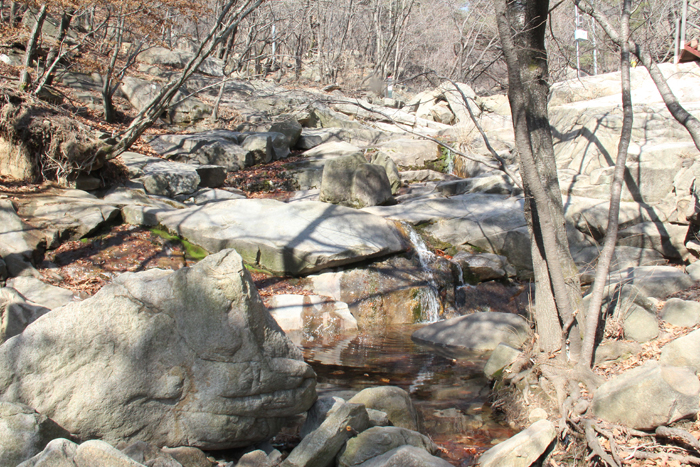
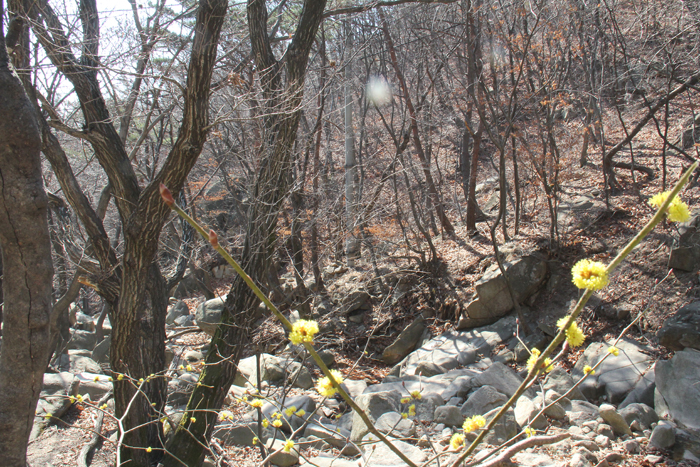
Hikers can enjoy a creek with clear-flowing water along the valley floor (top) and wild flowers that just have started to bloom.
Hikers, even strangers, exchange greetings as their paths cross. Bang Su-gyeong and Kang Gyeong-muk, both students who live in Gwacheon, say it is their first time to hike Gwanaksan Mountain, though they are casual hikers.
"The scenery is beautiful and the air is fresh," said Kang. "It is not too difficult, even for beginners."
"It is good exercise, not too hard," said Bang. "I can hear the sounds of water flowing along the trail and it is very pleasant."
"I climb Gwanaksan Mountain from time to time," said Seo Ji-eun, another hiker from Gwacheon. "It is close to the city and is very accessible."
The temperature began to rise with the warm sunlight streaming in. Beads of sweat formed on this correspondent's forehead and back.
Along the trail, there are two mineral springs from which people can drink directly. Hikers who have not brought water with them can quench their thirst here.
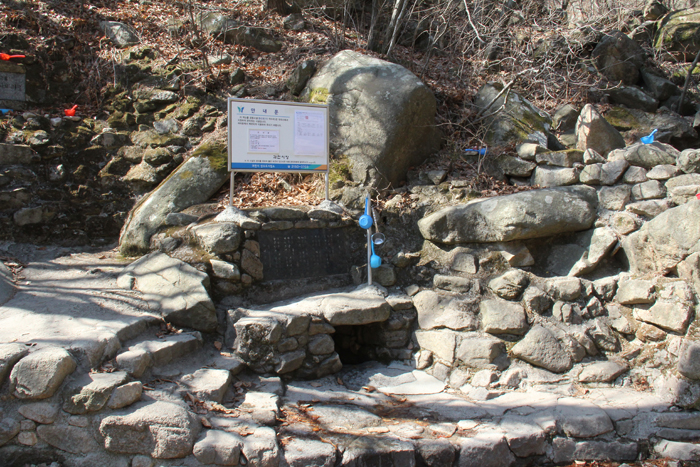
There are two mineral springs along the trail. The water is potable and it is cold and clean.
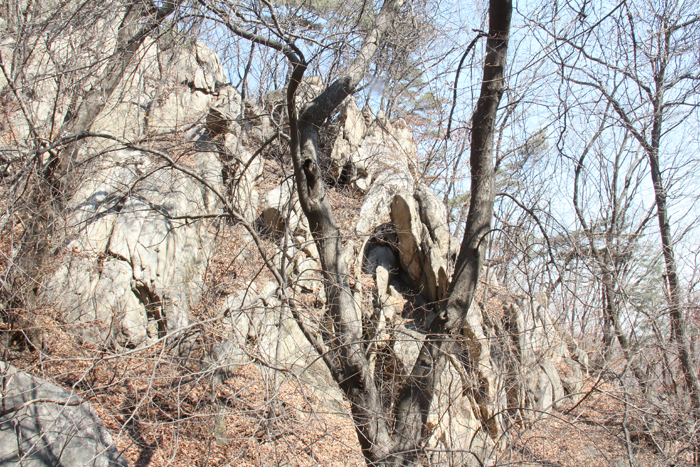
Going up the mountain, hikers can see strange-looking large rocks here and there.
The sounds of clear water flowing in the creek along the valley floor and the chirping of birds are both quite pleasant. Because of the high altitude, flowers are not in full bloom here yet, but hikers can see many wild flower buds.
Gwanaksan Mountain is a habitat for many animals and plants, including the scops owl, which is officially registered as a natural monument of Korea. According to Gwancheon City, many species of bird, including the spruce siskin, jay and woodpecker, live on the mountain, and other animals, including squirrels, hedgehogs and badgers, can also be found on occasion. Among the trees and plants on the mountain, there are pine trees, oak trees, Mongolian oak trees and acacia trees.
Halfway to the top, the trail becomes narrower and gradually steeper. Large, strange-looking rocks start to appear along the ridgeline.
After two hours of climbing, hikers reach Yeonjuam Temple (연주암, 戀主庵), a Buddhist temple. Yeonjuam is located adjacent to a smaller temple, Yeonjudae, located atop the mountain peak itself. Hikers sit together on the porch-like floor of Yeonjuam Temple and rest after a long hike. They eat snacks and lunch there to ease their hunger. Further up the trail from Yeonjuam Temple there is an observatory tower. It is only open during limited hours.
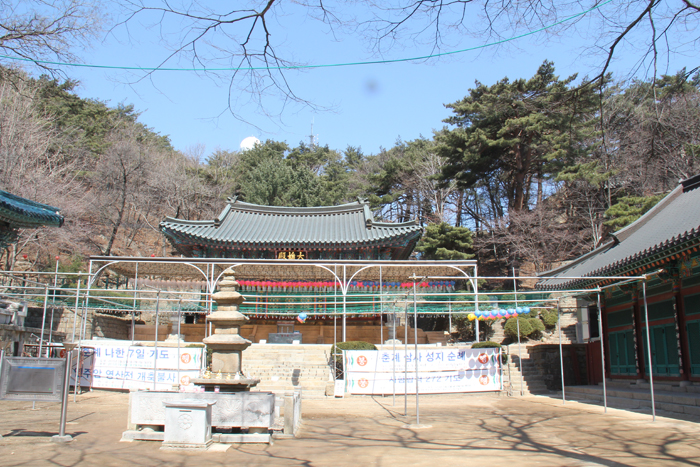
Yeonjuam Temple is located near the top of Gwanaksan Mountain.
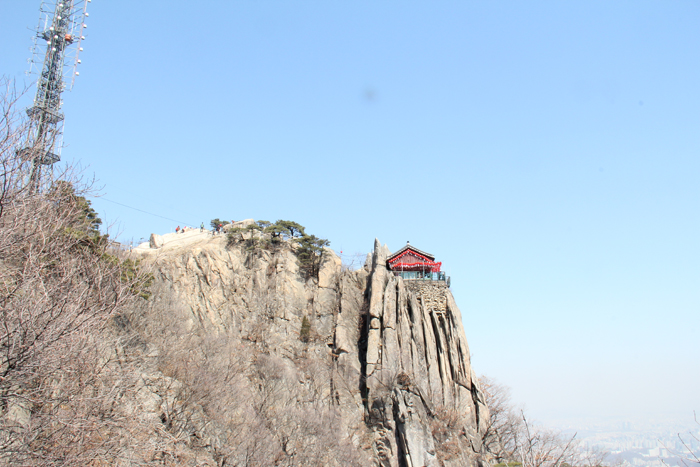
Yeojudae Temple can be reached after ascending a 300-meter steep staircase from Yeonjuam Temple. It sits atop the peak of Gwanaksan Mountain at 629 meters.
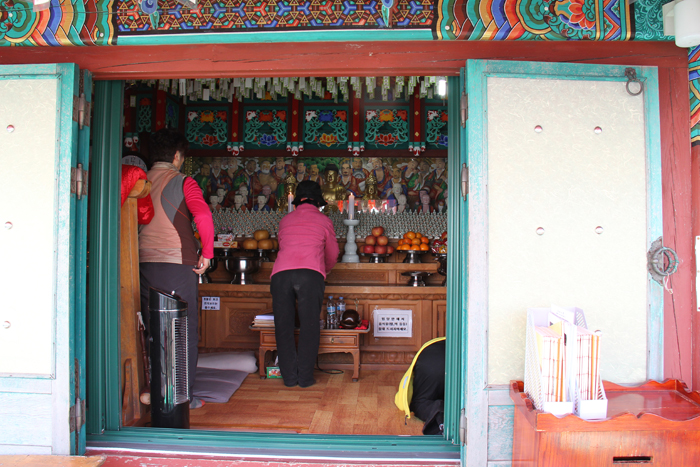
Many Buddhists visit Yeonjudae Temple located atop the mountain peak.
At Yeonjuam Temple, hikers can see Yeonjudae, a smaller temple located atop a cliff near Yeonjubong (629 meters), the highest peak on Gwanaksan Mountain. Yeonjudae can be reached after walking up 300 meters of steep, stone stairs. It is the highlight of Gwanaksan Mountain. Buddhists bow on their knees and pray, feeling no fatigue, even after three hours of hiking to reach the top.
Yeonjuam Temple was built in 1411 by Prince Yangnyeong (1394-1462) and Prince Hyoryeong, two elder brothers of King Sejong (r. 1418-1450) who stayed here for a while. They had the former Gwanaksa Temple moved here and renamed it Yeonjuam Temple.
Yeonjuam Temple was originally established in 677 by Uisangdaesa (652-702), a famous monk following Korea's Three Kingdoms Period (57 B.C.-A.D. 668). He built Uisangdae atop the cliff of Yeonjubong Peak, where Yeonjudae Temple now stands, and built Gwanaksa Temple in the valley below.
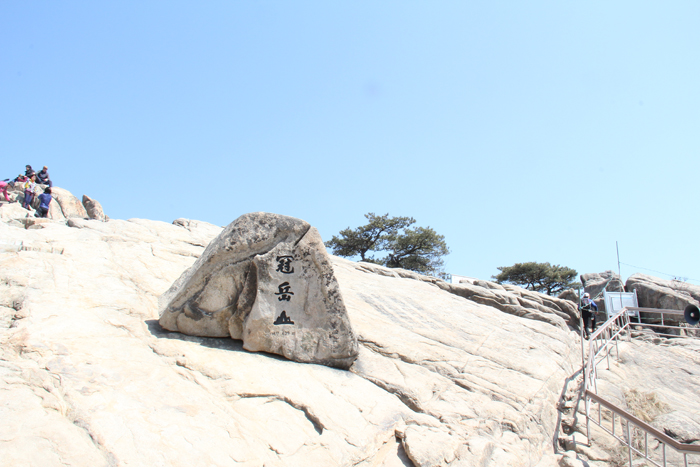
A rock atop Yeonjubong Peak, the highest peak of the mountain, reads, 'Gwanaksan.'
After three hours of hiking, this correspondent's stomach felt a little empty. Although it took nearly three hours to climb the mountain, it took fewer than two hours to go down. There is also a trail down to Sadang Station on line No. 4, but it takes a little longer to go down than taking the trail back to Gwacheon. Walking a few minutes down from the top toward Sadang Station, hikers can see the site where the former Gwanaksa Temple used to stand before it was moved to become Yeonjuam Temple.
Trail No. 1 can be reached from exit No. 10 or 11 of Gwacheon Government Complex station.
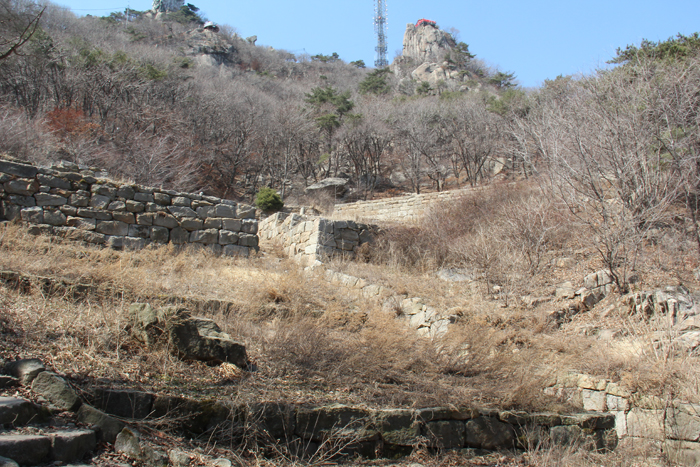
The site of the former Gwanaksa Temple can be seen along the trail toward Sadang Station on subway line No. 4.
By Limb Jae-un
Korea.net Staff Writer
jun2@korea.kr
